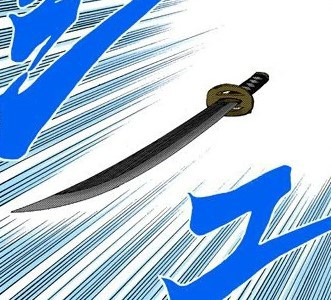Kusanagi: The Legendary Sword of Valor
Amidst the rich tapestry of Japanese mythology, the resplendent gleam of Kusanagi-no-Tsurugi, the Legendary Sword of Valor, captivates hearts and minds alike. Nestled among the Imperial Regalia of Japan, this sword has journeyed through the annals of time, woven with myths that speak of its divine origins and its embodiment of courage.
From its original appellation as Ame-no-Murakumo-no-Tsurugi, the “Heavenly Sword of Gathering Clouds,” to the revered name of Kusanagi-no-Tsurugi, or the “Grass-Cutting Sword,” this blade has carved its legacy not only in metal but in the hearts of those who cherish the essence of valor it represents.
What is the Kusanagi no Tsurugi?
Kusanagi-no-Tsurugi, the illustrious sword of legendary acclaim, stands as one of the Three Sacred Treasures, encompassing the revered imperial regalia of Japan.
Emanating from a tapestry of myths and steeped in profound symbolism, these treasures, including the mirror Yata no Kagami and the jewel Yasakani no Magatama, show the deep-rooted virtues that have guided the nation through time.
The sword Kusanagi-no-Tsurugi, whose name transformed from Ame-no-Murakumo-no-Tsurugi to the evocative “Grass-Cutting Sword,” symbolizes valor, embodying the courage that intertwines with Japan’s identity and sovereign lineage.
What is the story behind the Kusanagi no Tsurugi?
The history of the Kusanagi-no-Tsurugi sword unfolds through the intricate tapestry of Japanese legend and lore. According to the Kojiki, an ancient chronicle of myths, the tale begins with the god Susanoo encountering a family beset by tragedy and terror.

The fearsome Yamata no Orochi, an eight-headed serpent, had consumed seven of the family’s eight daughters, with its sights set on the final daughter, Kushinada-hime.
Susanoo took up the mantle of heroism, devising a cunning plan involving vats of sake and strategic gates to defeat the monstrous serpent. In the aftermath, amidst the serpent’s remains, he discovered a great sword, Ame-no-Murakumo-no-Tsurugi, which he presented to the goddess Amaterasu.
This sword would play a pivotal role in subsequent generations. During the reign of Emperor Keikō, the sword was bestowed upon the valiant warrior Yamato Takeru, who wielded it to remarkable effect.
Facing treacherous odds, Yamato Takeru harnessed the sword’s magical powers to control the wind and command the very elements. With the sword’s aid, he triumphed over adversity, leading to the renaming of the sword as Kusanagi-no-Tsurugi, signifying his conquest over the grasslands and the forces that sought his demise.
As time progressed, the sword took on an even greater significance. Joined by the mirror Yata no Kagami and the jewel Yasakani no Magatama, the Kusanagi-no-Tsurugi became one of Japan’s Three Sacred Treasures, representing valor, wisdom, and benevolence. It was revered as a symbol of divine authority, an emblem of the emperor’s legitimacy, and an example of the nation’s enduring spirit.
Kusanagi no Tsurugi in pop culture
Naruto
In the anime series “Naruto,” the portrayal of the Kusanagi Sword aligns with its legendary status. Orochimaru, a prominent character, wields the Kusanagi using a snake that extends from his mouth and produces the sword.
The blade showcases remarkable versatility, capable of swift extension and retraction, telekinetic control at Orochimaru’s will, and the ability to slice through virtually any obstacle. Its potency is such that even Enma, who can transform into a solid staff, acknowledges the sword’s formidable might.
Although formidable, Orochimaru’s Kusanagi proves ineffective against Naruto Uzumaki’s powerful four-tailed form. Furthermore, the sword possesses the unique trait of transforming into a small snake and returning to Orochimaru. After Orochimaru’s re-emergence and subsequent sealing, the Kusanagi is sealed along with him, leaving its ultimate fate shrouded in uncertainty.
Mortal Kombat
In Mortal Kombat 11, the Kusanagi is introduced into the series through Fujin, its wielder. This incarnation of the legendary sword is depicted as a short double-edged blade, intricately used in conjunction with its scabbard during combat.

Fujin harnesses the sword’s power to conjure crescent-shaped wind blades by slicing through the air, showcasing his mastery over the elements. Additionally, he employs the scabbard as a versatile blunt instrument, wielding it like a club or baton, and effortlessly levitates it with his wind-manipulating abilities.
Nioh
In the video game Nioh, the Kusanagi sword is obtainable through distinct means. Initially, it can be acquired as a rare drop from the formidable Yamata-no-Orochi encountered in the mission “The Demon King Revealed” situated in the Omi Region, exclusively available on the first occasion.
Alternatively, the crafting recipe for the sword, known as the Smithing Text, can be obtained as a rare drop from the formidable Yagyu Sekishusai encountered in the mission “Marobashi” found within the Tokai Region. These distinct pathways provide players the opportunity to wield the legendary Kusanagi sword as they traverse the virtual realm.
Call of Duty: Black Ops 3 Zombies
In Call of Duty: Black Ops 3’s portrayal, the KT-4, also referred to as the Kusanagi-no-Tsurugi, stands as a buildable Wonder Weapon in the Zetsubou No Shima map, playing a pivotal role in numerous mechanics within the gameplay. Emitting a green liquid, this weapon prompts spore bags to emerge on regular zombies before erupting.

By charging shots up to three levels, the liquid lingers on the ground, creating a bubbling effect that affects any zombie that traverses it. Its charging ability can be aborted by melee attacks. Particularly effective against Thrashers, the weapon can shatter their weak spots and even potentially eliminate them at full charge.
It possesses the unique capability of instantly destroying small Spiders and the webs they generate, which obstruct passages and conceal Perk/GobbleGum Machines. Notably, the KT-4 interacts with the map’s flora, acting as fertilizer for Seeds crucial in tasks such as Seeds of Doubt during the anti-air cannon flak shell step. An upgraded form, the Masamune, is also employed in the final stages of the game.
Furthermore, when aimed at the toxic spores on various walls, the weapon can reverse coughing effects, granting increased movement speed and sprint duration, along with temporary immunity to spore clouds. This effect can be repeated without cooldown as long as other spores are nearby, and Thrashers eliminated with the KT-4 can also generate these unique blue spore clouds.
Conclusion
As the saga of Kusanagi-no-Tsurugi unfurls, it continues to inspire awe and reverence, mirroring the indomitable spirit of valor it symbolizes. Rooted in ancient folklore and cherished through generations, this legendary sword’s journey is a testament to the enduring power of myth and the values it embodies.
Whether in the hands of mythical figures or as a metaphor for courage, Kusanagi stands as a timeless embodiment of valor, beckoning us to embrace our inner strength and honor the virtues it represents.

